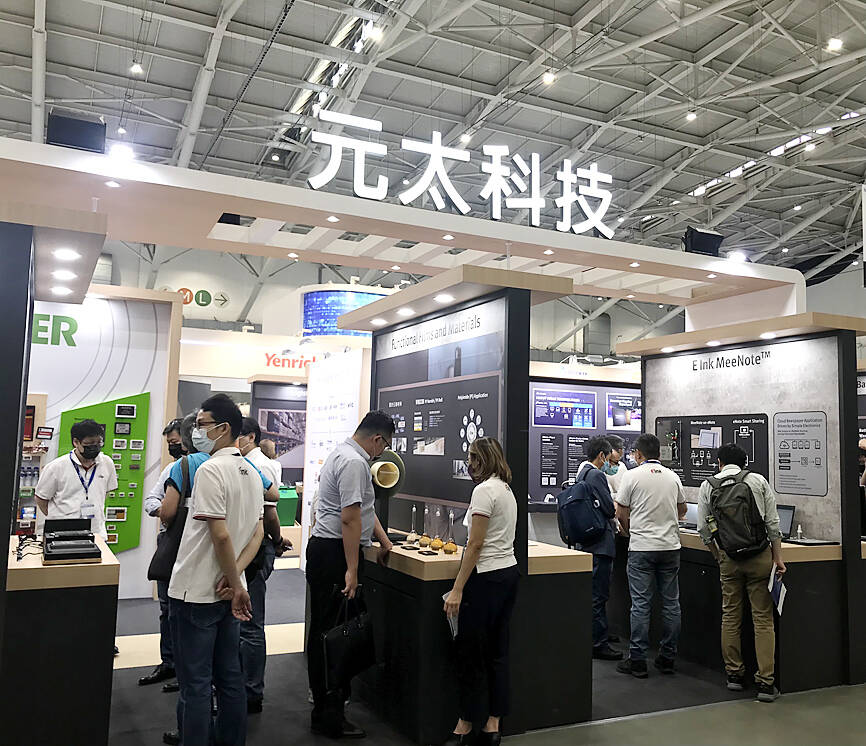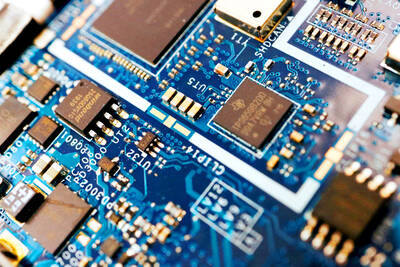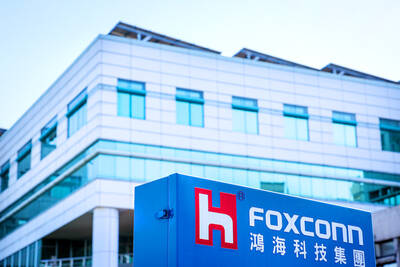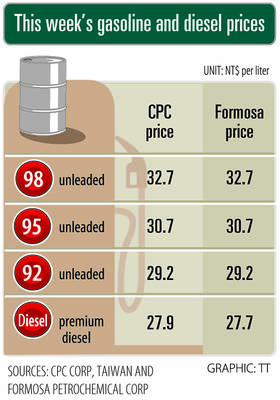E Ink Holdings Inc (元太科技), the world’s biggest e-paper display supplier, yesterday cut its revenue growth forecast for this year again, following a downward revision in August, as its supply chain partners continue to address excess inventories of three-color e-paper displays used in electronic shelf labels (ESL).
The downgraded revenue forecast also reflected slower demand for its new e-paper displays among many of its e-reader and e-note customers, who have postponed plans to use color displays to next year, E Ink said.
The company had expected the technology transition from monochromatic displays to new color displays to take place in the second half of this year.

Photo: Chen Mei-ying, Taipei Times
“The fourth quarter will be weaker than we thought. The first quarter next year will be the lowest point,” E Ink chairman Johnson Lee (李政昊) told an online investors’ conference.
However, there are encouraging signs for the company’s business outlook after some customers reported sales surged 30 to 40 percent on average with the launch of color-display e-readers and e-notes, Lee said.
System integrators installing ESLs are “relatively bullish” about next year’s business prospects, he said.
“We believe the headwinds we are facing now are short-term and the company will be able to sustain growth in the long term,” he said.
Inventories in supply-chain firms would return to healthy levels by the end of the first quarter of next year at the earliest, as customers have taken longer to switch to more advanced four-color display ESLs than the company had expected, Lee said.
From the second quarter of next year, revenue is expected to start picking up every quarter, he said.
Hopefully, the ESL penetration rate would rise to a double-digit percentage from single digits after supply-chain inventories return to healthy levels, he added.
Despite the inventory pressure, E Ink expects its new full-color e-paper displays to enter volume production next quarter.
E Ink reported a 43 percent slump in net profit last quarter to NT$2.4 billion (US$74.75 million), compared with NT$4.24 billion a year earlier.
On a quarterly basis, it was little changed from the previous quarter’s NT$2.42 billion.
Earnings per share dipped to NT$2.1 last quarter from NT$7.08 in the same quarter last year and down slightly from NT$2.12 the previous quarter.
Royalty income from licensing its South Korean subsidiary’s LCD patent fell to about NT$79.74 million last quarter, from NT$223 million a year earlier.
“We have been collecting royalties for more than 10 years. It is gradually approaching the end of its life,” Lee said.

GREAT SUCCESS: Republican Senator Todd Young expressed surprise at Trump’s comments and said he expects the administration to keep the program running US lawmakers who helped secure billions of dollars in subsidies for domestic semiconductor manufacturing rejected US President Donald Trump’s call to revoke the 2022 CHIPS and Science Act, signaling that any repeal effort in the US Congress would fall short. US Senate Minority Leader Chuck Schumer, who negotiated the law, on Wednesday said that Trump’s demand would fail, while a top Republican proponent, US Senator Todd Young, expressed surprise at the president’s comments and said he expects the administration to keep the program running. The CHIPS Act is “essential for America leading the world in tech, leading the world in AI [artificial

DOMESTIC SUPPLY: The probe comes as Donald Trump has called for the repeal of the US$52.7 billion CHIPS and Science Act, which the US Congress passed in 2022 The Office of the US Trade Representative is to hold a hearing tomorrow into older Chinese-made “legacy” semiconductors that could heap more US tariffs on chips from China that power everyday goods from cars to washing machines to telecoms equipment. The probe, which began during former US president Joe Biden’s tenure in December last year, aims to protect US and other semiconductor producers from China’s massive state-driven buildup of domestic chip supply. A 50 percent US tariff on Chinese semiconductors began on Jan. 1. Legacy chips use older manufacturing processes introduced more than a decade ago and are often far simpler than

Hon Hai Precision Industry Co (鴻海精密) yesterday said that its research institute has launched its first advanced artificial intelligence (AI) large language model (LLM) using traditional Chinese, with technology assistance from Nvidia Corp. Hon Hai, also known as Foxconn Technology Group (富士康科技集團), said the LLM, FoxBrain, is expected to improve its data analysis capabilities for smart manufacturing, and electric vehicle and smart city development. An LLM is a type of AI trained on vast amounts of text data and uses deep learning techniques, particularly neural networks, to process and generate language. They are essential for building and improving AI-powered servers. Nvidia provided assistance

Gasoline and diesel prices this week are to decrease NT$0.5 and NT$1 per liter respectively as international crude prices continued to fall last week, CPC Corp, Taiwan (CPC, 台灣中油) and Formosa Petrochemical Corp (台塑石化) said yesterday. Effective today, gasoline prices at CPC and Formosa stations are to decrease to NT$29.2, NT$30.7 and NT$32.7 per liter for 92, 95 and 98-octane unleaded gasoline respectively, while premium diesel is to cost NT$27.9 per liter at CPC stations and NT$27.7 at Formosa pumps, the companies said in separate statements. Global crude oil prices dropped last week after the eight OPEC+ members said they would